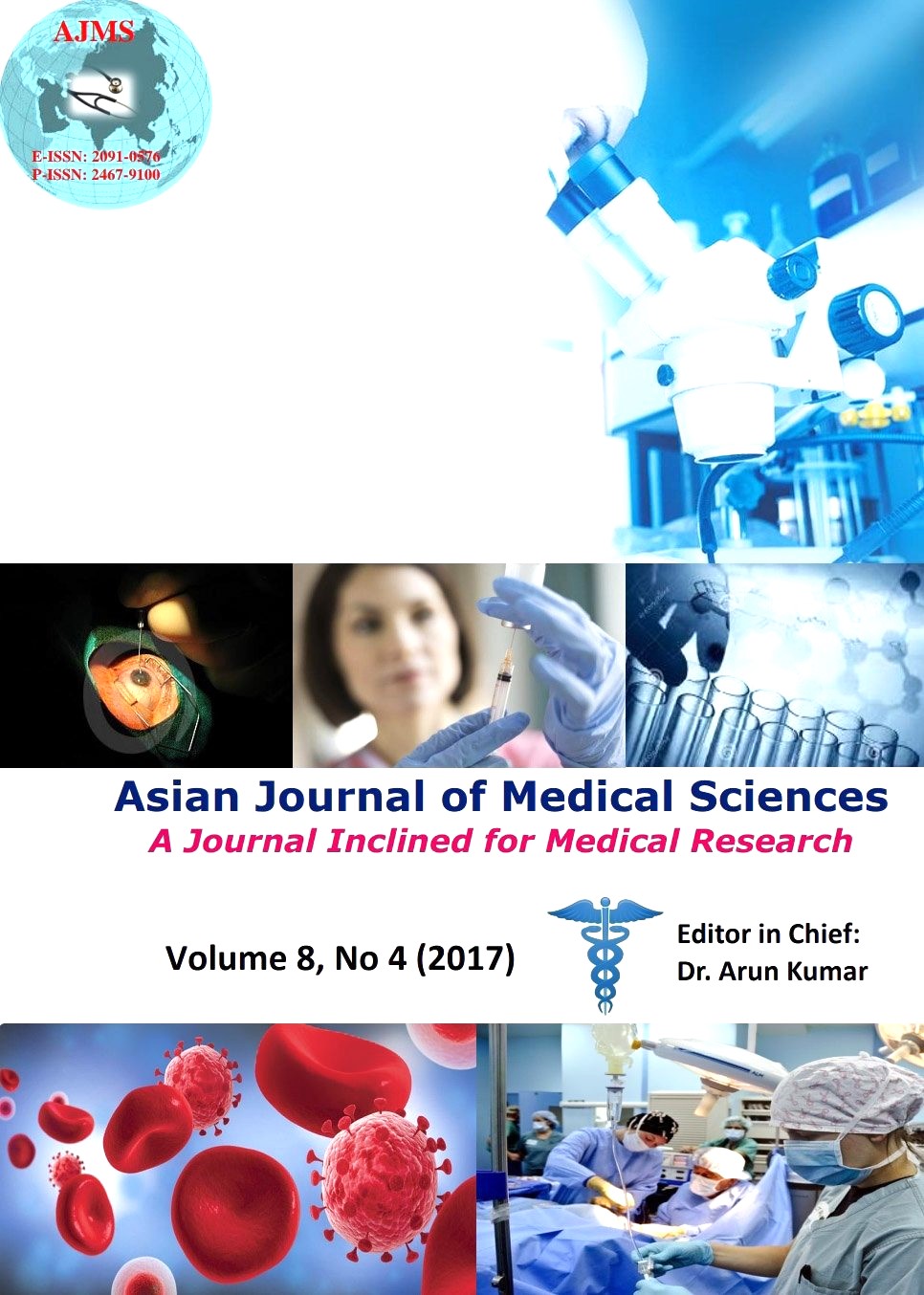Clinical presentation of scrub typhus during a major outbreak in central Nepal
Keywords:
Acute febrile illness, Acute kidney injury (AKI), Hematuria, AlbuminuriaAbstract
Background: Scrub typhus, an emerging rickettsial disease caused by the organism Orientiatsutsugamushi, is associated with multi-organ involvement. We prospectively studied the clinical manifestations of the disease during a major outbreak in central part of Nepal.
Aims and Objective: This study was carried out with an aim to analyze the clinical presentations, laboratory parameters, complications and outcomes of scrub typhus.
Materials and Methods: A prospective observational study was conducted in the Department of Medicine in a tertiary teaching hospital. A total of 1398 patients admitted with acute febrile illness were subjected for Scrub Typhus Detect™ IgM ELISA test, among which 502 (35.90%) patients tested positive and were included in the study. Acute kidney injury was defined according to KDIGO guideline. Statistical analysis was done with SAS University Studio package using t-test for continuous variables and chi-square test for categorical variables.
Results: Mean age of the patients was 30.37±18.81 years with 26.29% in the pediatric age group (<14 years). Females comprised of 55.98% of the patients. Majority (97.98%) of the patients were seen between July to November. Clinical presentations in the descending order of frequency were anorexia (55.18%), headache (53.39%), lymphadenopathy (15.73%), jaundice (13.35) and eschar (6.57%). Mean scrub typhus IgM ELISA value was 2.17. Leukocytosis was seen in 5.78% and thrombocytopenia in 66.73% of patients. Transaminitis was found in 80.68% of patients. Urinary abnormalities were recorded in 42.3% of patients. Acute kidney injury (AKI) was seen in 35.8% of patients followed by acute respiratory distress syndrome (24.1%), pneumonia (22.1%), shock (14.74%), neurologic manifestation (6.37%) and cardiac manifestations (4.38%). ICU admission was required for 18.73% of patients and 8.57% required ventilator support. Mortality rate was 1.79%.
Conclusion: Scrub typhus, being an emerging vector borne infectious disease in Nepalese context, is associated with multiple organ involvement.
Asian Journal of Medical Sciences Vol.8(4) 2017 27-31
Downloads
Downloads
Published
How to Cite
Issue
Section
License
Authors who publish with this journal agree to the following terms:
- The journal holds copyright and publishes the work under a Creative Commons CC-BY-NC license that permits use, distribution and reprduction in any medium, provided the original work is properly cited and is not used for commercial purposes. The journal should be recognised as the original publisher of this work.
- Authors are able to enter into separate, additional contractual arrangements for the non-exclusive distribution of the journal's published version of the work (e.g., post it to an institutional repository or publish it in a book), with an acknowledgement of its initial publication in this journal.
- Authors are permitted and encouraged to post their work online (e.g., in institutional repositories or on their website) prior to and during the submission process, as it can lead to productive exchanges, as well as earlier and greater citation of published work (See The Effect of Open Access).




